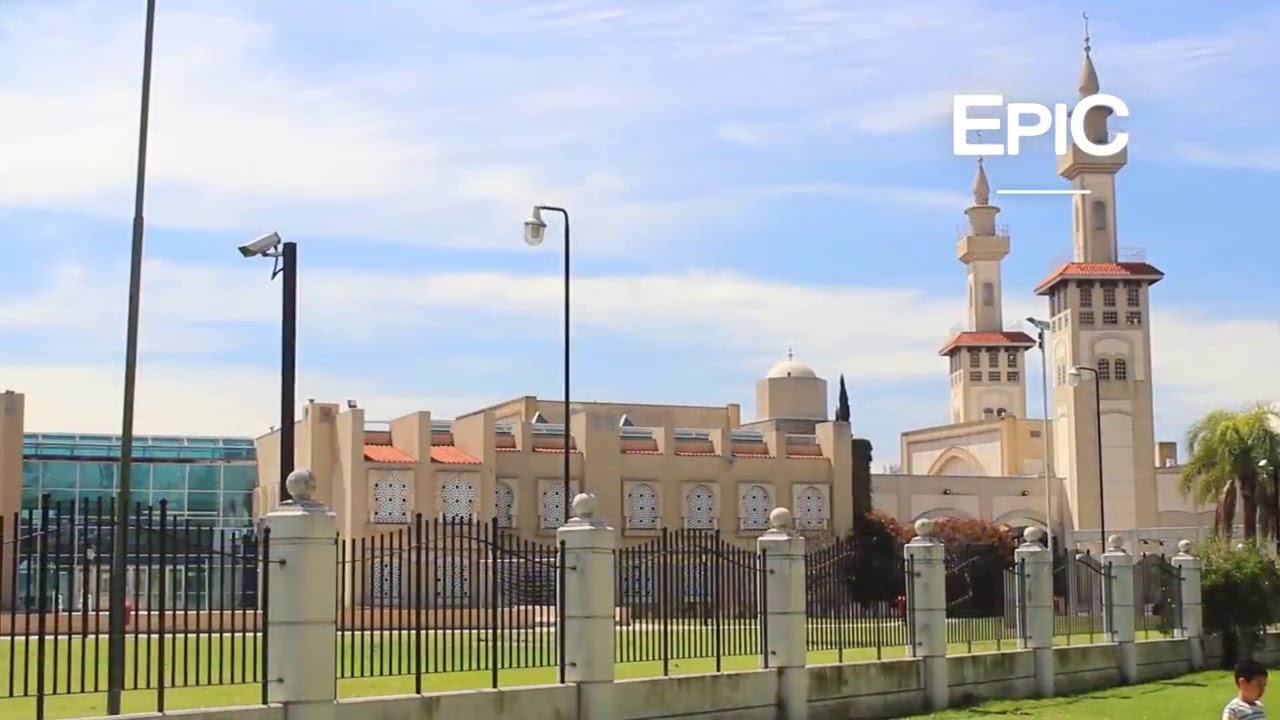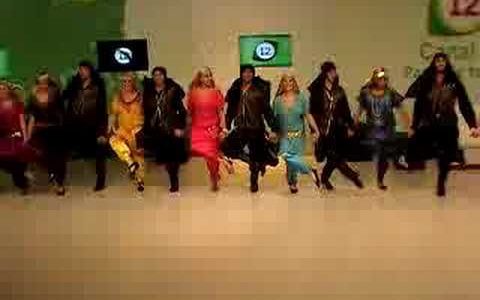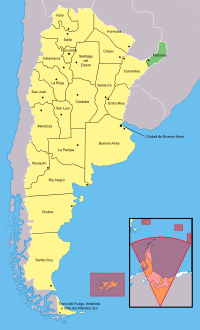September 1, 2012
A bit exaggerated, but there is a germ of truth to it.
From the Arab-Argentine show: Desde el Aljibe (From the Well).
I edited it from the original You Tube source.
Source: ElAljibedetodos, a viewer who assembled hundreds
of these videos on his YouTube channel.
There is nothing more Argentine than the Gaucho. It is their national figure. The image it strikes is of a Spanish cowboy on the Pampas.
But it appears as if there has been some monkeying with history. The truth is a bit more complicated.
The gauchos are supposedly descended from Spanish frontier stock? History books portray the gaucho as a Spaniard, with some Indian mixed in, and that is the official story – the one which the Argentine government wanted the world to know – but it is not the whole truth.
It turns out that the gauchos may not have been as quite as Spanish as we are told.
For the truth, we have to go back to South America’s colonial days. The officers in the Spanish colonial empire were quite white, often of aristocratic or Basque stock. You would be surprised, but some of them actually looked Nordic. Hernán Cortés, the conqueror of Mexico, had a red beard. A lot of Spain’s nobility were descended from Visigoth Germanic invaders who took over Spain in the 5th century. They would form the ruling classes of Spain. These were the descendants of those who had fought the Moors during the Reconquista of Spain from Muslim rule. Many of them had pure European lineage, without the addition of Moorish blood that the upper crust looked down on – but which was more common among the lower classes. This desire for racial purity was called limpieza de sangre (purity of blood).
Among their foot soldiers were lower class Spanish, some drifters, mercenaries, adventurers, and some Moriscos.
SO WHO WERE THE MORISCOS?
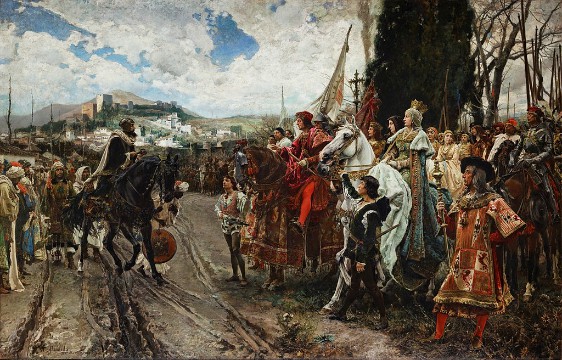
The Fall of Granada – 1492 – The Reconquista has won.
Morisco is a Spanish word that means Moorish One. The Moors had ruled in Spain from 711 AD to 1492 AD.
Contrary to current politically correct histories which portray Moorish Andalusia as a heaven on earth, the Moors were tyrannical and murderous. Christians who did not pay dhimmi taxes were executed. Spanish women were taken for Muslim Harems. It was not the halcyon paradise that present apologists make it out to be.
There was a reason the Spanish drove the Moors out.
When Grenada fell, and Spain was finally free in 1492, a treaty was signed giving freedom of religion to those Muslims who remained behind; but other than that, Catholic Spain had won and was totally triumphant.
To this day, the Muslim world considers the loss of Andalusia as the greatest disaster of their history. They still refer to it as the “Tragedy of Andalusia.”
Those Muslim individuals who remained in Spain were called Moriscos: The Moorish Ones.
Though originally guaranteed freedom of religion by the surrender Treaty of Alhambra; the Catholic church tried to force conversions. A rebellion broke out in 1499 which was put down, and in 1501 the Moriscos were told to convert or leave Spain.
Much of the elite classes of Muslims left for North Africa, the poorer Muslims stayed behind and converted – or did they?
There were always cells of those who practiced their religion in secret. Slowly, the Catholic Church ferreted them out.
Moriscos would be checked to make sure they drank wine or ate pork like good Christians did.
In 1567, the Moriscos were required to adopt Spanish names, stop speaking Arabic, and have their children educated by priests. A major rebellion broke out: The War of the Alpujarras. At first the Spanish went easy on the rebels; but as mercenaries came in from North Africa, the Spanish got ruthless and utterly crushed them. The Moriscos from Alpujarras were dispersed throughout Spain in the hopes of assimilating them.
Great Clip, but she leaves out that the Moors did rise up more than once,
and the Spanish considered them a threat.
Instead, the recalcitrant Alpujarra Moriscos ended up stirring up the more assimilated Moriscos in the rest of Spain. Overall, the adherence of many Moriscos to Islam was quite real. Crypto-Muslims were quite common.
Spain was fighting the Turks in the Mediterranean, and Protestants in Northern Europe. These Moriscos were seen as a real threat. Worse yet, they had considerably higher birth rates. They were a demographic menace.
By 1609, Spain had enough. The Moriscos were almost totally expelled. Foreign fleets were hired to come in and dump them in North Africa. By this time, many were sincere Catholics who did not speak Arabic; but there was a perceived racial aspect to this, and they were expelled whether they were Catholic or not. They were not trusted.
SO NOW YOU KNOW WHAT A MORISCO IS.
How does this affect Argentina and the gauchos?
Well, many of the colonial records speak of Moriscos in the colonies.
The Moriscos were not stupid. Facing severe discrimination in Spain, many of them fled to the colonies for a better life; just as the expelled Jews had done earlier. Some were brought over involuntarily.
Source: Bishtawiadel
The Spanish Crown failed to control the illegal entrance of Moriscos no matter how hard authorities tried to avoid it. Moriscos were considered ‘unfit’ to spread the Christian-European way of life Spain intended to transmit to America.
In the New World, many Moriscos could pass themselves off as equals. White men were rare and needed in the colonies. Arab or Jewish blood might be overlooked, if everything else was in order. And one did not have to learn a new language. Perhaps they could start life over on a more equitable arrangement.
Some did well. Others were still mistreated; and these probably deserted into the interior of Argentina. Others probably just made use of the looser social codes in the New World.
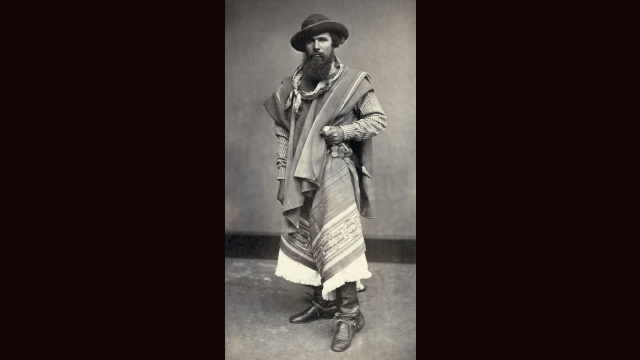
White Gaucho, 1868 – the ideal!
Fast forward to 1810, and we see mestizo (racially mixed) units in the Argentine War of Independence routing the Spanish armies. They are wearing garments that look like wardrobes from the Mideast. Baggy pants. Baggy clothes. Until that time, the strange mestizos were little known outside of the frontier, but they called themselves gauchos, a word whose origin was unknown. They proved instrumental in destroying Spanish power in South America.
These gauchos were supposedly part-Indian, part-white; and some were even part African. They were nominally Catholic, and often had Indian religious practices as well. However, the truth is — their origins were not precisely known.
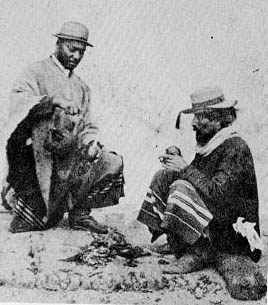
Mestizo Gauchos
The reality – 1880
Though grateful for the help of the gauchos during their war of independence, the chiefly white leadership of Argentina did not relish Argentina’s mestizo (mixed) racial makeup, and sought to make Argentina “whiter.”
There were discussions and letters about who should be encouraged to immigrate and settle in Argentina, and the answers that came out of Argentina’s leadership would sound positively shocking to the modern ear.
The depth of preference for “whiteness” would reach unbelievable levels of absurdity. The Argentine politician Juan Bautiste Alberdi preferred French or English settlers. There was even discussions of excluding general Spanish, Italian, and Jewish immigration.
Excluding Spanish and Italian emigration?! The Argentine leadership which came up with this idiocy were of Spanish and Italian blood themselves.
One has to wonder what these elites were thinking. Clearly some had bought into the myth of Nordic superiority; but the level of self-contempt is amazing.
… it is necessary to encourage Anglo-Saxon immigration. Anglo-Saxons represent steam, commerce, and liberty, and it will not be possible to instill these things in ourselves without the active cooperation of this progressive and civilized race.
– Juan Bautista Alberdi an Argentine Politician who wanted to make French the official language of Argentina
European immigration became a flood after 1870. And while some Germans and French came, most of the immigrants were Italians and Northern Spanish; the very stock Alberdi did not want. Argentina even got a large influx of Jews, which they did not seek, either.
Argentina also got some Austrians, a few Poles, and even a few Scandinavians as well, along with a few Irish and British. Not as Nordic as Argentina wanted, but still quite white. Argentina is the “whitest” country in South America.
Violence often broke out between these European settler farmers and the nomadic gauchos, so Argentine leadership began to despise these very same gauchos which had won Argentina’s freedom. The gauchos were a hinderance to a nation that sought to whiten itself. The Argentine government had enough and wanted to get rid of them.
Sound familiar?! Just as Spain wanted to get rid of the Moriscos, now Argentina wanted to get rid of the gauchos.
So the Argentine goverment hit on an idea. Why not draft the gauchos to fight the local indigenous Indians? Whoever died, Argentina would win. This did not go over well with the gauchos who often had family on both sides of the contest.
The era of the gaucho was fading. The Indians were being reigned in; and the gaucho life would dying out; all by design. Ironically, some of the best writings on the demise of the gauchos were by an Irishman, William Bulfin, who lived among them; and may be responsible for immortalizing the gaucho to the English speaking world.
Just like the demise of the American cowboy. The Argentine Wild West was over.
No doubt, some gauchos were white, but these were not the ones the government of Argentina wanted to get rid of.
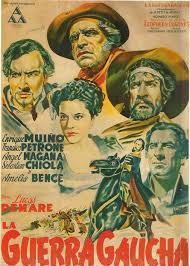
THE GAUCHO WAR
The heroes were now whites
Posted on YouTube: July 30, 2013 – There is an an option to auto-translate to English
NOTICE HOW WONDERFULLY WHITE THE ACTORS ARE
By the end of the 19th century, as white immigrants – chiefly from Italy, Spain, and Germany – were moving in and adopting the ways of the Argentine culture, an unrealistic romantic view of the gaucho developed. White farmers would now dress like gauchos. These newly minted gauchos were the images which were presented to the world.
The official story became one of sturdy white frontiersman – okay, maybe with a small amount of Indian blood – but not so you could notice – who won the Argentine West. The word gaucho was chalked up to have originated from Mapuche or Quechua Indian words.
Sidenote:
We do the same in American Westerns. In reality, the Wild West was about 1/3 either black or Hispanic; but you never see that in Hollywood Westerns
All neat and clean! White Civilization had tamed a continent, freed Argentina, and beaten the Spanish European colonial masters.
SO NOW YOU KNOW THE OFFICIAL STORY.
Only something happened which no one anticipated.
Just as European immigration took off, much to Argentina’s delight, Arabs also started immigrating to Argentina, much to Argentina’s displeasure. This soon became a concern.
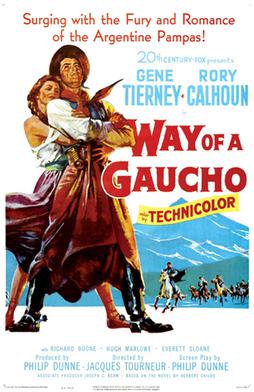
By the time Hollywood got into the act …
The Gaucho was Anglo-Saxon
Syrians and Lebanese started flooding in to Argentine ports. They would be the third or fourth largest wave of immigrants to Argentina. Today they are 9% of the population. Initially, they were despised.
Worse yet, these Arabs started noticing something wrong about Argentina’s official founding symbol: The glorious European Spanish tamer of the continent.
The Arabs pointed out that gauchos dressed like Arabs. Gauchos and Arabs both wore loose flowing pants and shirts. They noticed that the word gaucho resembled the Arabic word for cattle driver. They told the Argentines that the gauchos must be of Arab origin.
From a footnote on Muslim site: Bishtawiadel
[26] [Gaucho comes f]rom the Valencian Arabic [chaucho]; it was the name given to men in charge of transporting cattle from place to place, an occupation much held by Moriscos. Gauchos in Argentina regard pork as a bad meat, and do not raise pigs.
My note: The idea is that the Arabs in Moorish Valencia might have adopted a Turkish word: chaucho – which was taken from the Arabic shawsh which is not an unreasonable assumption.
Of course, this was deemed: Heresy! Only sturdy white men could tame a continent! Only real red-blooded white men could have driven out the Spanish.
Their ideas were summarily dismissed as the wild braggings of ignorant Arab immigrants.
But these claims would not go away. These Arab-Argentines kept bringing up some embarrassingly inconvenient facts.
Then academics started noticing that the old Spanish colonial records spoke of Moriscos in the colonies. The evidence had always been there; but no one ever paid attention to it before – not until the sons of Lebanese and Syrian immigrants started to point it it out.
This new vision of Argentina’s roots did not go down well.
Why Argentina was even 8% German. Alright, not as many German-Argentines as the founders had wanted; but … Argentina was white. And, don’t you forget it.
Argentina was a white country for white men. Its national symbol could not possibly be a dusky Morisco.
Or could it?!
Today, no one dismisses the idea as so crazy. There are too many coincidences. It is clear that gauchos have other influences. Many gauchos wear berets and a kerchief, a tradition which comes from the Basques of Spain and France. who were very common in Spanish colonies.
To be sure, the Arab-Argentines may exaggerate the Morisco contribution. To claim everything in the gaucho culture and bloodline was Arabic is nuts. But a lot of gaucho’s baggy clothing, the name gaucho, their nomadic lifestyle, their rugs, and their horsemanship, etc., clearly indicate a very possible Morisco contribution to their origin.
The final answer is not in, but more and more the idea is starting to take hold. No one is laughing at Arab claims any more.
Source: Saddle Up with Argentina’s Gaucho Culture
Argentina is home to an estimated 150,000 gauchos that come from a mix of Spanish, Portuguese, Arab/Berber and Native American ancestry.
It is now conceded that the gaucho is at least part-Arabic in origin.
Maybe only DNA will settle the question further.
24 November, 2017 – Edited, major adjustments.
31 August, 2020 – Edited, major adjustments, to make site responsive.
31 December, 2023 – Edited, fixed a dead video link.


